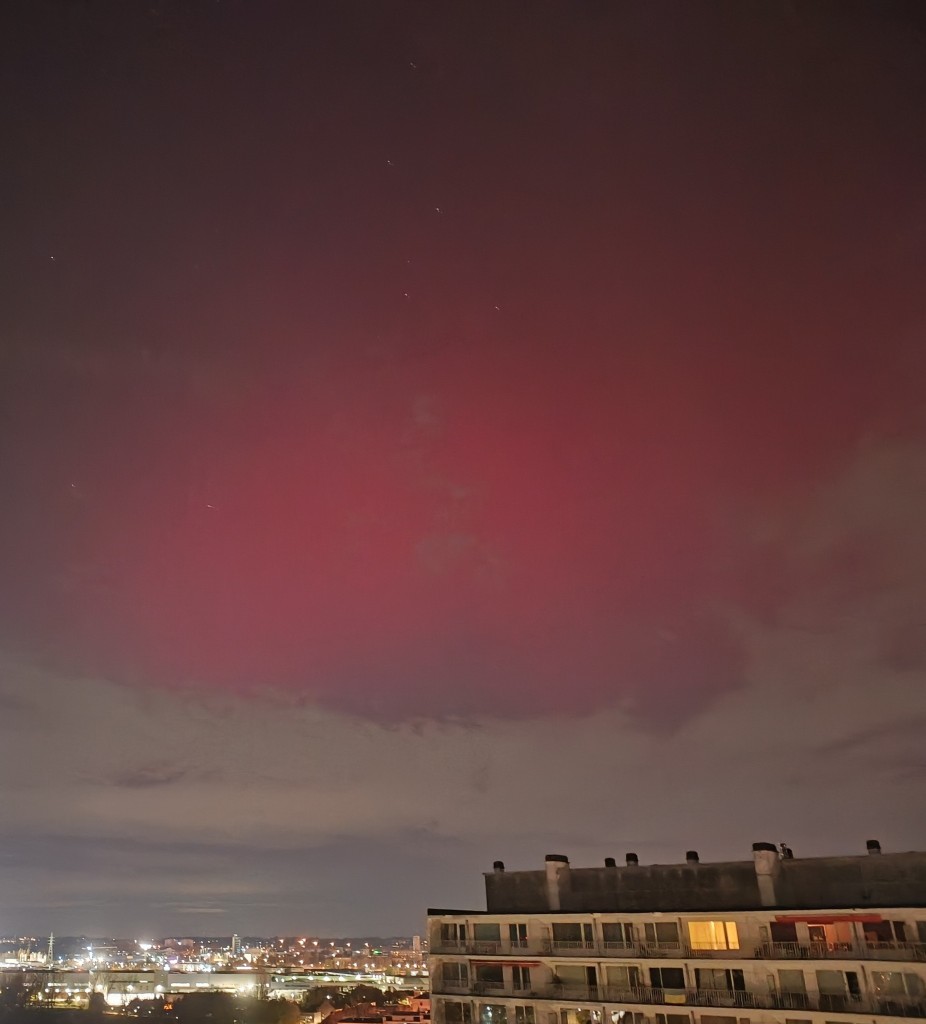Northern Lights Over Belgium
November 12, 2025, very early in the morning. Colleagues from the STCE, the Belgian Space Weather Centre, admired the northern lights from their terrace in Brussels and are amazed by the show of colours. After all, it is quite exceptional to be able to observe this phenomenon in Belgium (let alone in the middle of a city with a lot of light pollution), even if our Sun is now in the most active phase of its cycle.
Indeed, the Sun is the cause of these northern lights. In recent days, our Earth has been in the sights of a very active solar region. This region produced several solar flares of the highest category (X). These were accompanied by eruptions of solar plasma and protons, which are very fast particles. The successive plasma clouds were directed toward Earth and were launched with increasingly higher speeds.
Stormy Nights
Last night, the first of these solar clouds arrived at Earth. They caused very strong disturbances in our magnetic field. This is measured using ground-based instruments called magnetometers, which, for Belgium, we have installed in Dourbes and Manhay. Based on these measurements, a local K-index is compiled that reflects the disturbance of the magnetic field in our region. A local K > 8 indicates the possibility of visible northern lights. The graph below clearly shows that this condition was met last night.

Magnetic Activity Indices for Belgium (source)
Should we be concerned?
The northern lights are primarily a beautiful spectacle to be enjoyed to the fullest, but a geomagnetic storm can affect our technology. In addition to the geomagnetic field, they also disrupt the ionosphere, a layer in our atmosphere that is crucial for communication. Last night, warnings were sent to the aviation industry to alert them to disruptions in their radio communications. GPS positioning may also be slightly less accurate during a storm. In countries closer to the poles, disruptions can occur in the electricity grid. Network operators and the Defence forces in our country were therefore also notified. The STCE is monitoring the situation closely.
What can we expect next?
Yesterday, on November 11, this active region launched the most recent solar flare and plasma cloud. This cloud left the sun at a speed of more than 1500 km per second and is now racing through space toward Earth. We estimate it will reach us tonight. We can therefore expect additional disruption to our magnetic field. Space weather will thus remain stormy for a few more days.
In addition, the sun is still very active and the area causing all the disturbances is still facing Earth. New solar flares and plasma clouds cannot be ruled out. The STCE forecasters are facing a busy week. And if we are lucky, we may also see the northern lights tonight, as long as the clouds do not spoil the show: look north!

